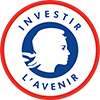
I agree Our site saves small pieces of text information (cookies) on your device in order to deliver better content and for statistical purposes. You can disable the usage of cookies by changing the settings of your browser. By browsing our website without changing the browser settings you grant us permission to store that information on your device.
Homologous recombination (HR) in ES cells is a reference technology to generate high-value targeted mouse models allowing to achieve highly relevant animal models for most applications, from R&D to preclinical studies.

ES cells transfection with targeting vector
|

|
 Targeted ES cells selection
Targeted ES cells selection |
ES cells validation

(PCR, Southern blot, Karyotyping)
|

Injection into blastocyst
|

|
||||

|

|

Chimeric new born mice
|

|

Implantation into pseudo pregnant female
|

|
||||

m/+ and +/+ (WT) animals
|
Sequencing and selection of GLT animals

|

|
Note: for generation of complex mutations, ES route remains (yet!) superior to CRISPR/Cas9.
Non exhaustive list of publications from PHENOMIN scientists or collaborators and customers.